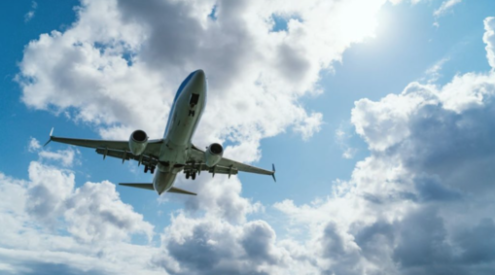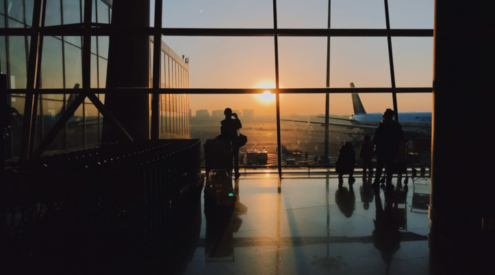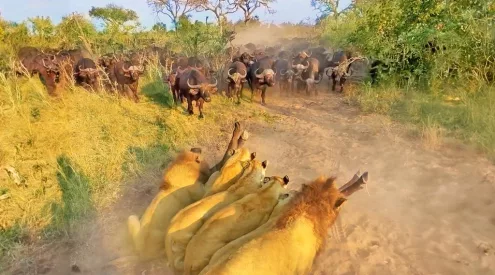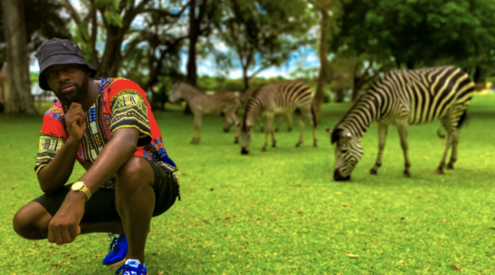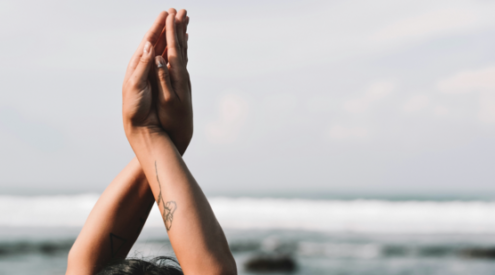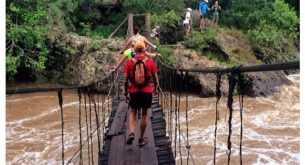Of all the places left to see gorillas in their natural habitat; Rwanda, Uganda and the Democratic Republic of Congo, Bwindi Forest is one of the most magical. Seeing a mountain gorilla would be the highlight of any trek but, in Bwindi visitors have the added experience of walking through one of the oldest natural forests in the world – full of fascinating birds, insects and mammals.
At the start of the trek, the views are dominated by the peaks of Uganda’s highest volcanoes, which include Muhavura, Gahinga and Sabyinyo. These are known as the ‘islands in the sky’.
Young travellers from all around the world can now see gorilla families in Uganda, aspart of a whirlwind of African adventures with youth-specialist travel company Contiki, which has recently extended its travel itineraries to include African destinations.
Kele Scheppers, Marketing Manager for Contiki South Africa, says they are determined to make this once-in-a-lifetime experience accessible to a younger generation of travellers, with permits included, transport and accommodation. Not only is it an incredible experience, but the money generated from the permits will ensure the survival of these giant, gentle primates.

Visiting the Gorillas in the Bwindi Impenetrable Forest is more accessible than ever and helps raise money for conservation.
Sightings are not guaranteed but the chances of an encounter in Bwindi are high. Trackers walk ahead and are in contact with group guides. When you first glimpse a gorilla, it might be challenging to remain still, but it is essential to stay calm, so as not to disturb the gentle giants. Visitors are always cautioned not to approach the gorillas; let them come to you.
The story of gorilla conservation in Uganda is complicated but also very interesting. Conservation efforts are credited for Africa’s growing gorilla populations, with Uganda sheltering 400 of these primates, confirmed in the 2011 census, and 480 in the Virunga Massif based on a 2010 census.
Also see: The only gorilla trekking story you’ll ever need to read

A young Mountain Gorilla sits in the forest.
Uganda’s Bwindi Impenetrable and Mgahinga National Parks have welcomed more than 10 baby gorillas since the census, a result that is attributed to the conservation efforts of the Uganda Wildlife Authority, local communities and conservation partners. There are now 14 known gorilla families in Bwindi, and each has unique characteristics and behaviours to tell them apart.
“We all know the immeasurable joy of a baby born to a family after a long time of waiting. This feeling is not different with the birth of mountain gorillas,” says Erika Archibald, Senior Communications Officer at The Dian Fossey Gorilla Fund International.
“As one of the world’s most endangered species, it might be that much more amazing and worth celebrating. Where the Dian Fossey Gorilla Fund works in Rwanda and the Democratic Republic of Congo, infants are born throughout the year and, in the last two years, in Uganda, births were celebrated close to August and November. In July last year, two arrived in just one week!”
Uganda enjoys a spring-like climate year-round, so you could be lucky enough to encounter a newborn on a gorilla trekking adventure at any time.

Young Mountain Gorilla in the Bwindi Impenetrable Forest.
What to wear
Daytime temperatures range from 23C, at times dropping to as low as 11C, so it’s vital to have layers to strip off or add.
Pack rain-proof clothing and appropriate hiking shoes. Lightweight, water resistant trousers (if possible) and a cotton t-shirt with a long-sleeved cardigan or sweater on top is recommended. To escape pesky insects, tuck your pants into your socks. A small backpack is also useful. Remember to pack spare camera batteries. Gardening gloves are also recommended, to help with the thick and spiky plants in the forest, though these aren’t required.
Did You know?
Female mountain gorillas give birth to one infant after a pregnancy of almost nine months.
Baby mountain gorillas, weighing anything upwards of 1.8 kilograms, spend the first three to four years carried mostly on their mother’s back.
The nose print of a gorilla is unique to each individual gorilla, much in the same way as humans have unique fingerprints.
Pictures: Supplied





